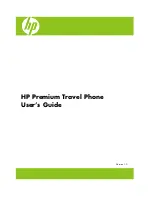
226
A
PPENDIX
B: C
IRCUIT
P
ROVISIONING
T1 Prerequisites
All contact information
must
be available at time of installation, including
telephone numbers and appropriate account representative contact
information from the client’s carrier.
T1
Recommendations
If the client is using standard (DS1) T1 lines, 3Com recommends that the
circuits from the T1 provider meet the following criteria:
■
Framing Type
— Use either ESF with B8ZS.
■
Zero Code Suppression
— Use D4 with AMI.
■
Signaling
— E&M/Wink is required.
■
Start Type
— Wink Start is required.
Some Central Offices that use a DMS 100 switch may configure T1
circuits with an option to provide outbound dial tone. This configuration
does not provide a wink for outbound calls. The NBX system does not
need dial tone as it provides its own. Verify that the outbound channels
are configured for Wink Start.
■
Line Hunting
— Obtain from the telephone company the method
they use to hunt for an available channel on the T1 span. The NBX
system typically searches downward from high-numbered channels
when trying to place an outgoing call. If the telephone company
searches upward from low-numbered channels for calls to the NBX
system, conflicts are avoided.
■
Circuit Type
— 4-wire is required.
■
DID Applications
— When using DID or DNIS, 3Com recommends
ordering telephone numbers that easily fit into the NBX system
numbering plan. Although the numbering plan is extremely flexible, it
is far easier to use if you have 3 or 4 digit DID\DNIS codes. This allows
for a simple dial plan implementation.
For 3-digit internal extensions, try to use the 100-499 range.
Have the
carrier provide the corresponding three digits for the DID\DNIS
numbers/code. For 4-digit extensions, ask for the 1000-4999 range
and request that the carrier use corresponding four digits for the
DID/DNIS numbers/code.
For Caller-ID type services, the carrier
must support
in-band ANI.
For more information, see
“Ordering DID (Direct Inward Dialing)
Services for T1”
on
page 158
.
Summary of Contents for V3000 ANALOG
Page 20: ...20 ABOUT THIS GUIDE ...
Page 80: ...80 CHAPTER 1 INTRODUCTION ...
Page 120: ...120 CHAPTER 2 INSTALLING SYSTEM HARDWARE COMPONENTS ...
Page 142: ...142 CHAPTER 4 ANALOG LINES ...
Page 162: ...162 CHAPTER 8 T1 DIGITAL LINE CARD ...
Page 192: ...192 CHAPTER 10 CONFIGURING IP TELEPHONY ...
Page 198: ...198 CHAPTER 11 TROUBLESHOOTING ...
Page 224: ...224 APPENDIX A SPECIFICATIONS ...
Page 230: ...230 APPENDIX B CIRCUIT PROVISIONING ...
Page 240: ...240 APPENDIX D OBTAINING SUPPORT FOR YOUR 3COM PRODUCTS ...
















































